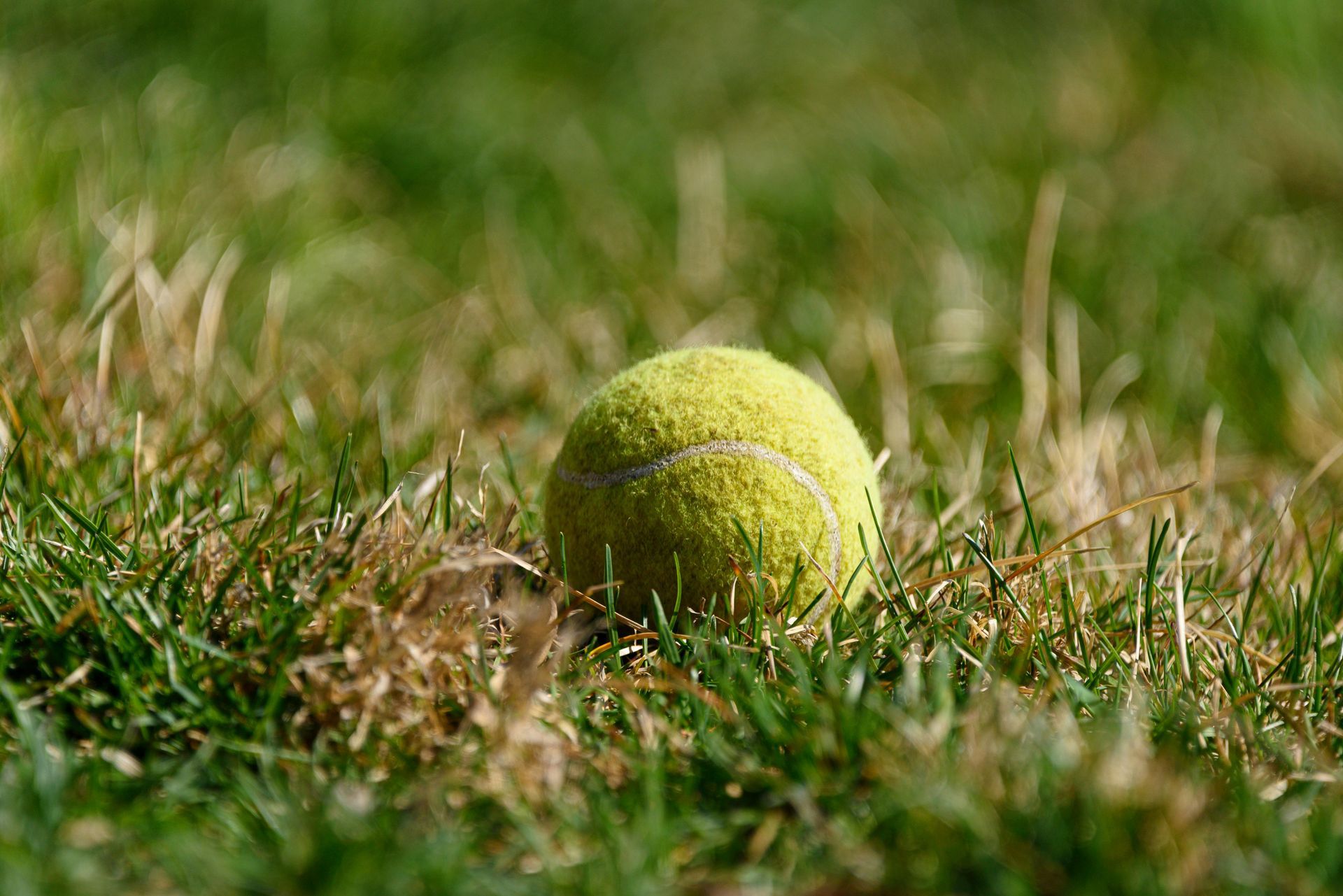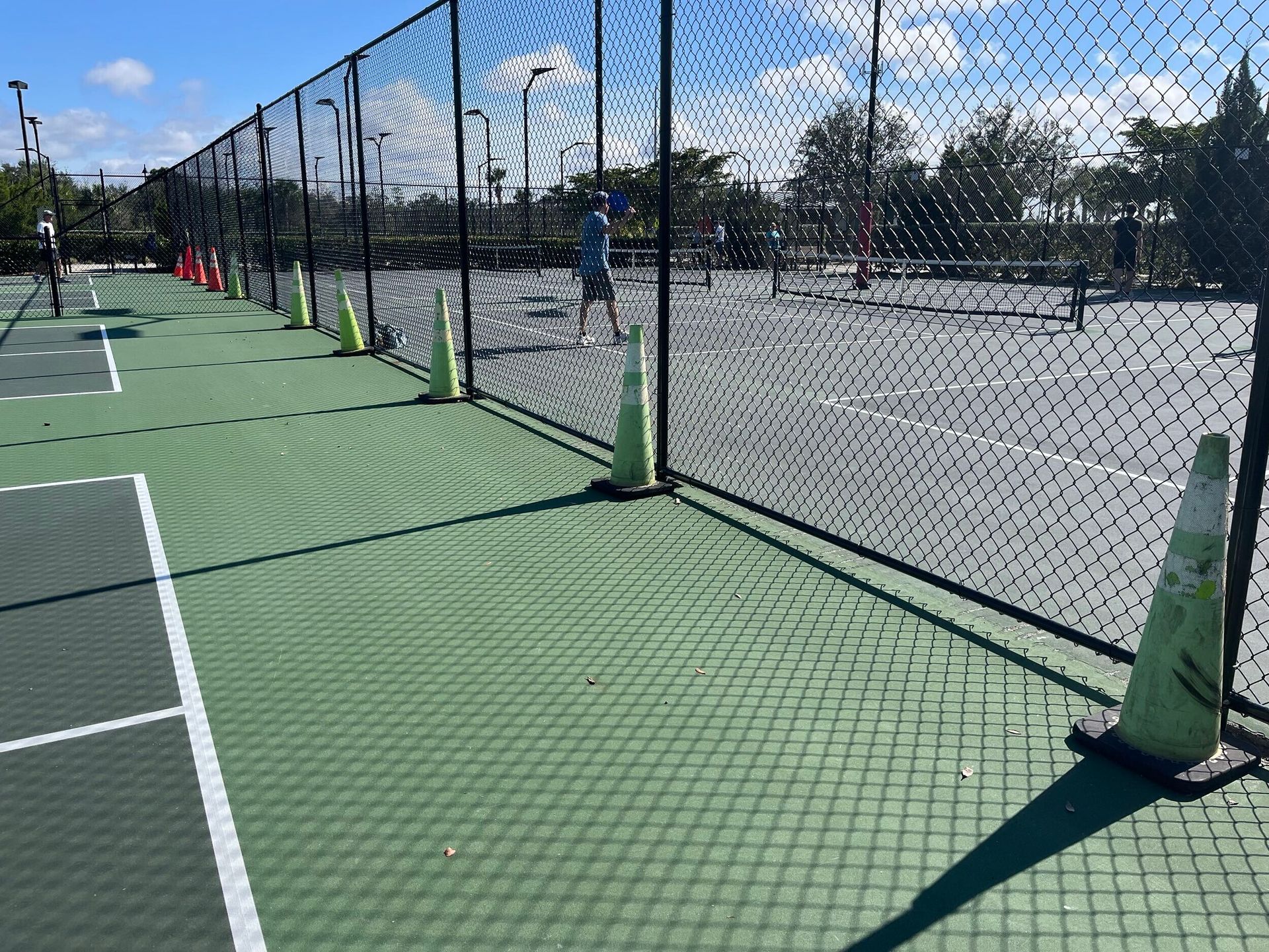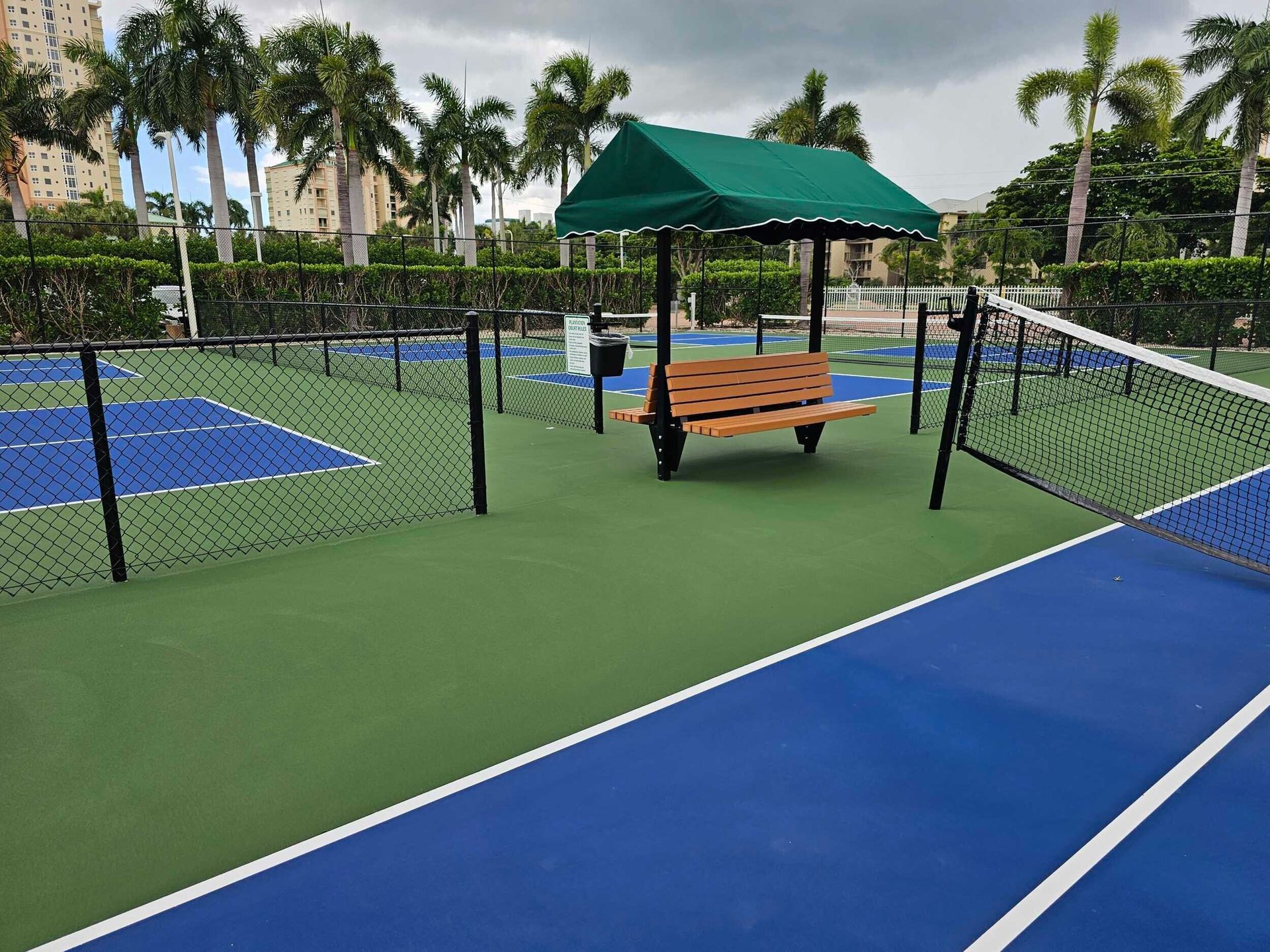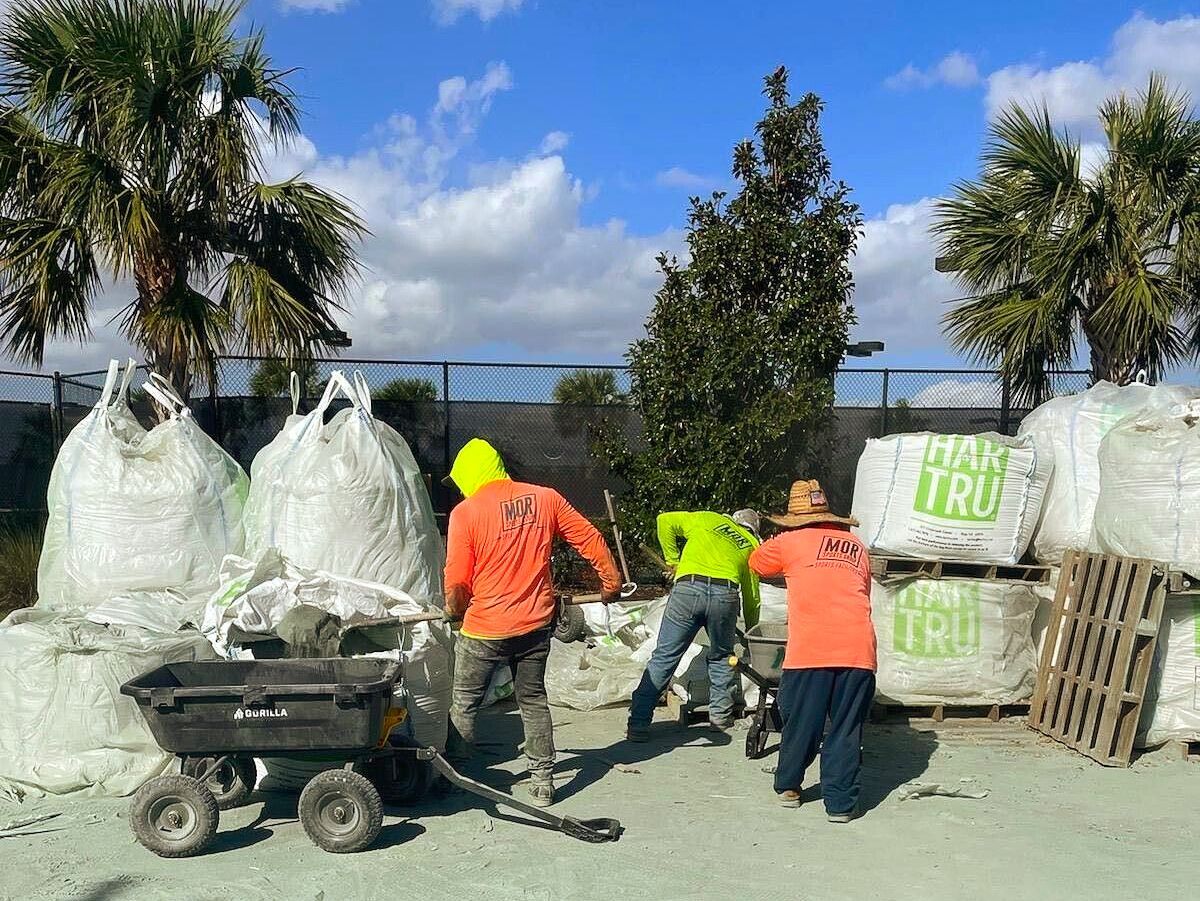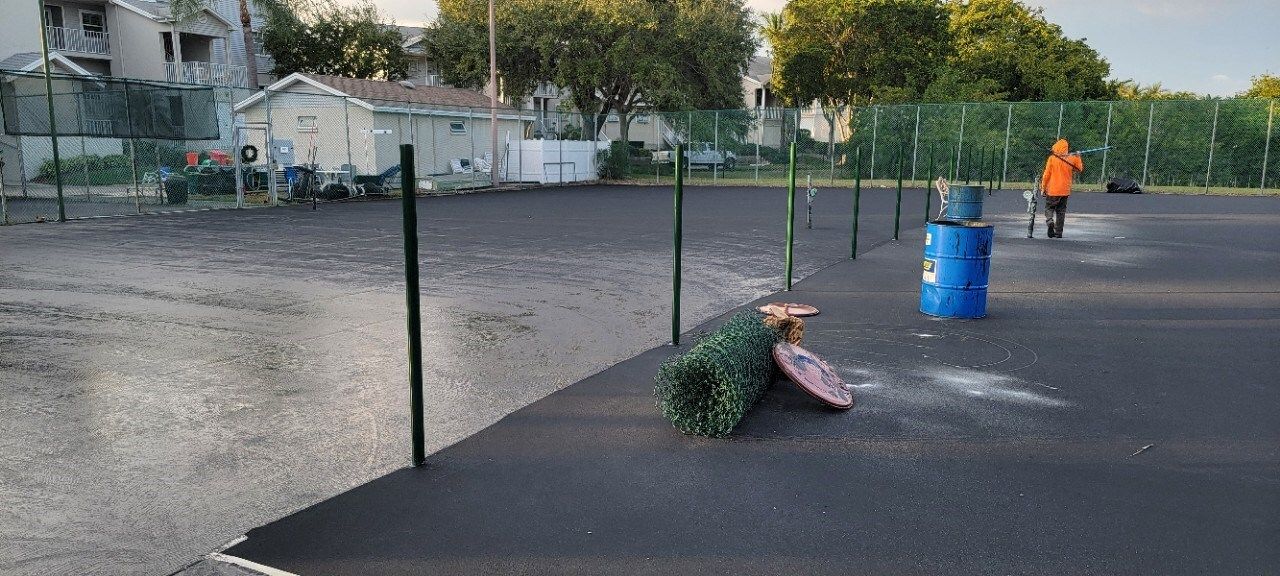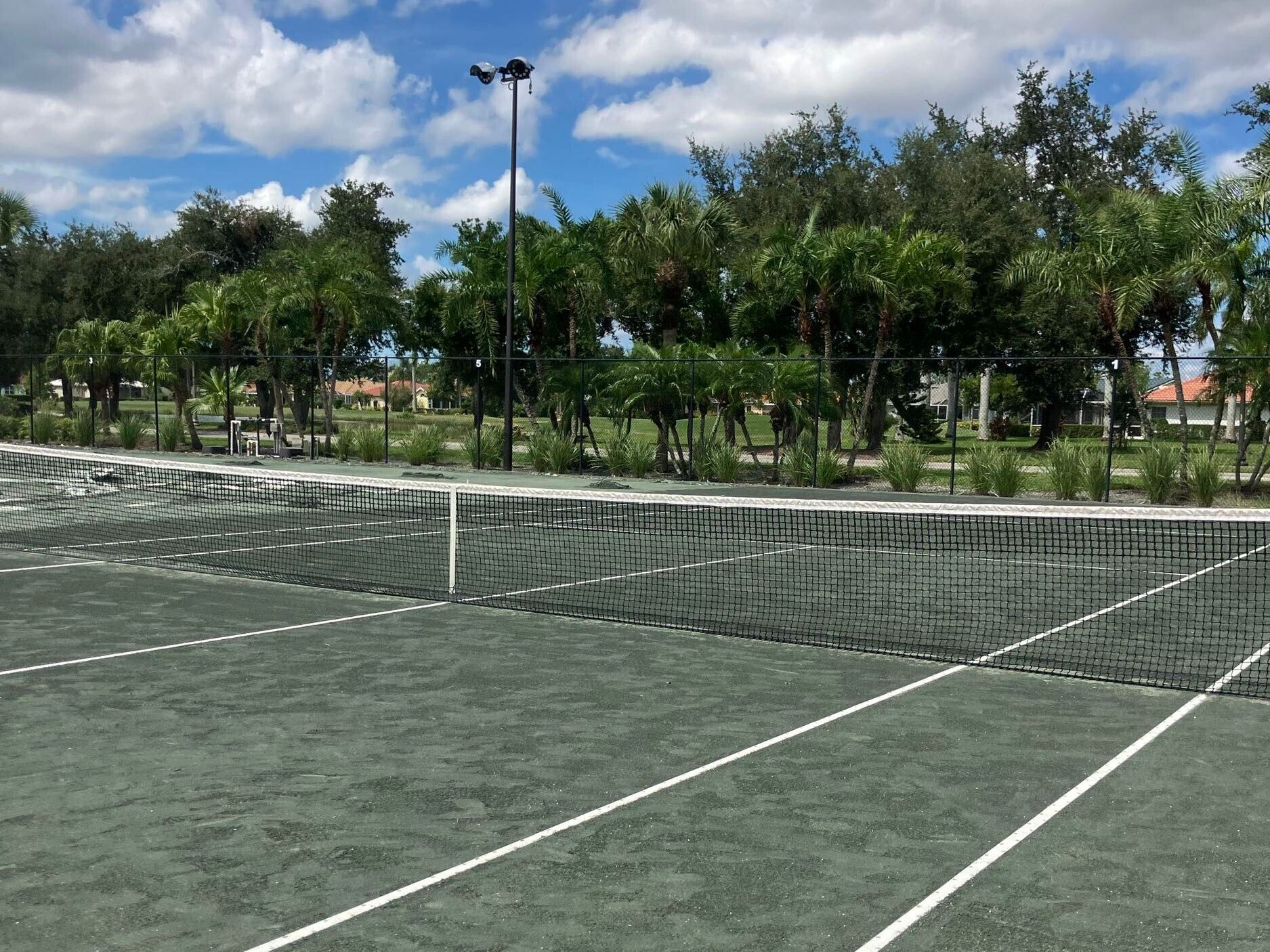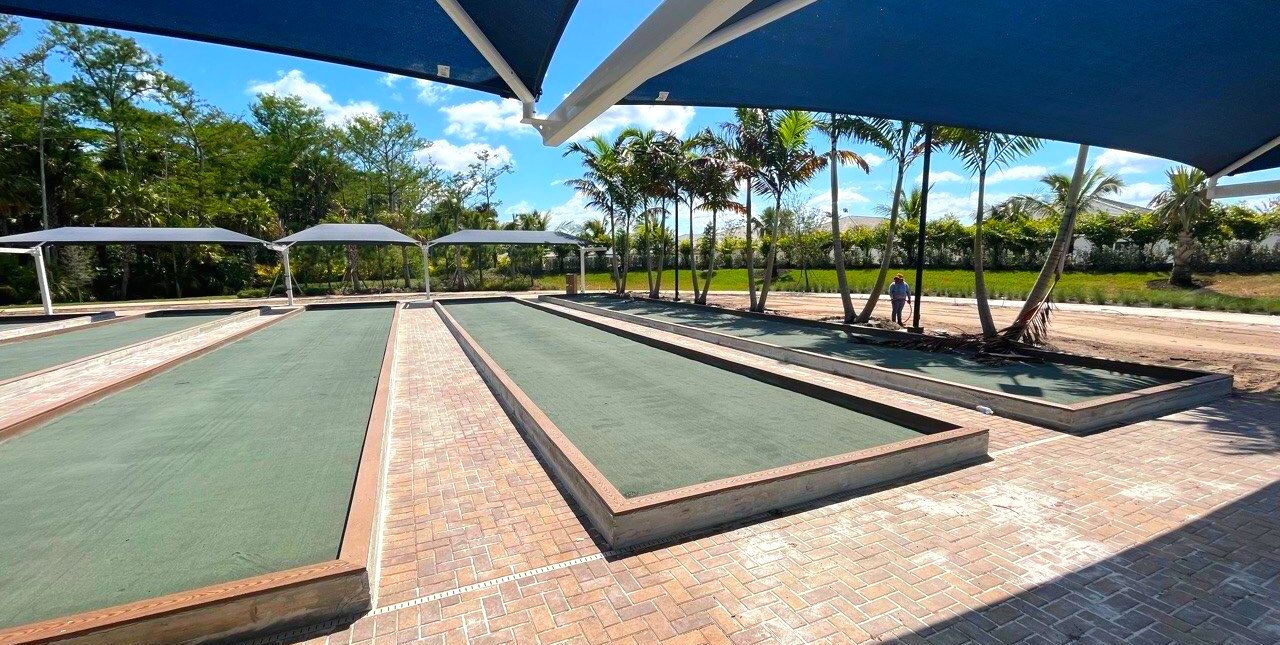Official Standards for Pickleball Court Design
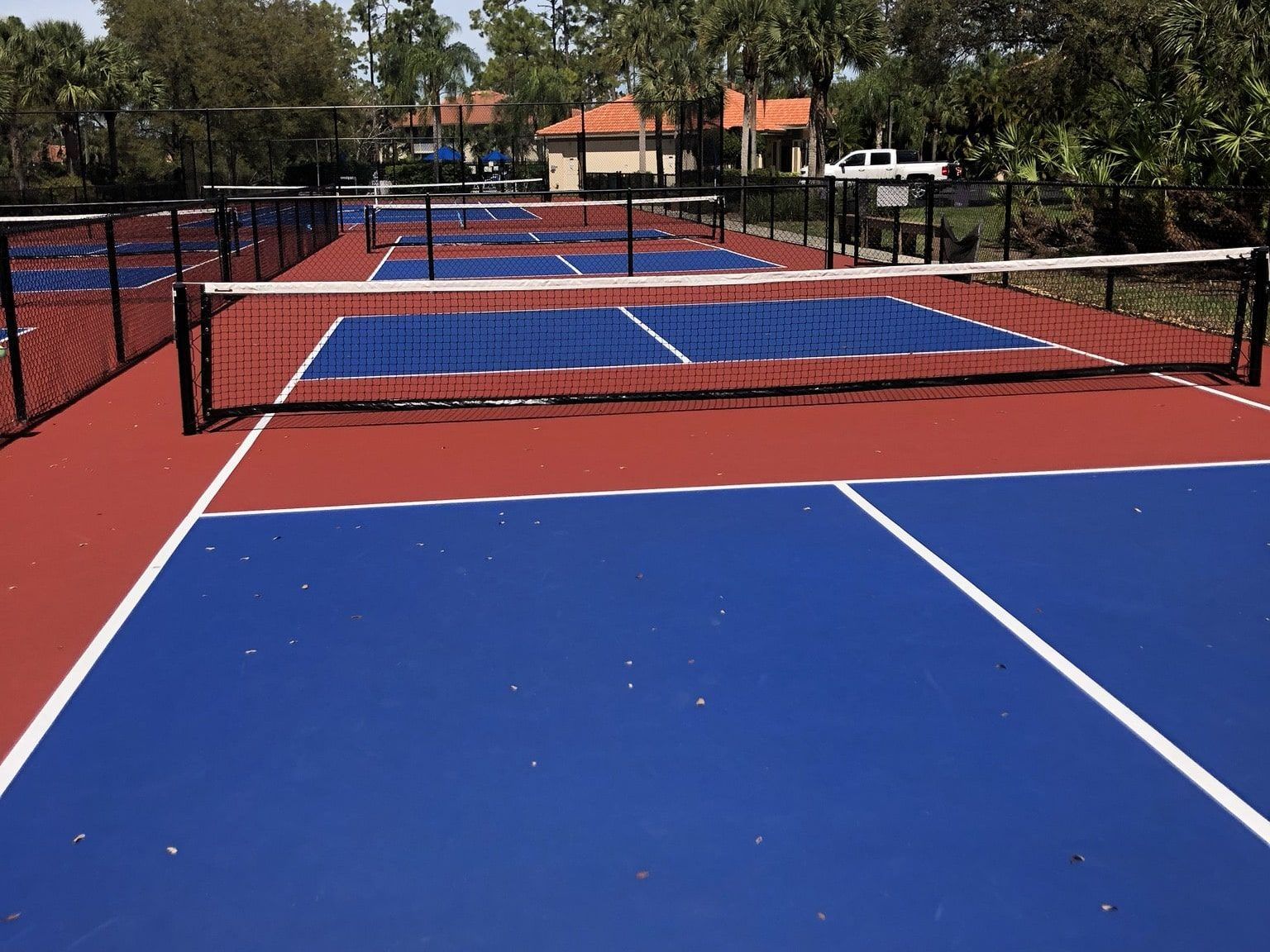
Pickleball is one of the fastest-growing sports in the world, blending elements of tennis, badminton, and ping-pong into an exciting and accessible game. This guide covers everything you need to know about pickleball court design, from dimensions and surfaces to net placement and additional features. Whether you're setting up a home court or planning a professional facility, these guidelines will help you get started.
Understanding Pickleball Court Dimensions
Pickleball courts have specific size requirements to ensure fair and consistent gameplay. Whether for recreational use or professional tournaments, the dimensions should follow USA Pickleball regulations. An appropriately sized court provides players with enough space for movement while maintaining the integrity of the game.
Standard Court Size for Singles and Doubles
The official size of a pickleball court is 20 feet wide by 44 feet long, which remains the same for both singles and doubles matches. This ensures consistency in gameplay, allowing players to compete under standardized conditions regardless of the match format.
To provide players with adequate space to move around the court, the recommended play area, including the out-of-bounds zones, is 30 feet wide by 60 feet long. This additional space helps prevent players from running into surrounding obstacles during play.
For tournament-level courts, a slightly larger area of 34 feet by 64 feet is ideal. This extra space allows for increased movement and accommodates higher-level competitive play, ensuring that players can fully extend for shots without restriction.
Non-Volley Zone ("The Kitchen") Specifications
The non-volley zone (NVZ), commonly called "the kitchen," is a 7-foot area extending from both sides of the net. Players are not allowed to volley (hit the ball before it bounces) while standing in this zone, which encourages more strategic play and prevents aggressive smashes near the net.
- The kitchen is clearly marked with a solid 2-inch-wide line to ensure visibility.
- Stepping into the kitchen while volleying results in a fault, adding a tactical element to gameplay.
For more details on the rules of the kitchen and gameplay strategies, visit Pickleball Portal. It provides expert guides on non-volley zone rules, common faults, and strategic foot placement to help players improve their net game and avoid kitchen violations.
Pickleball Net Height and Width
An adequately installed net ensures consistent ball movement and fair play. The net should meet the following specifications:
- Height: 36 inches at the sidelines and 34 inches in the center to allow for an even playing field.
- Width: 22 feet wide, extending slightly beyond the 20-foot court width to secure it to the posts.
- Material: Made of a durable mesh that can withstand outdoor elements for long-lasting use.
A well-maintained net plays a crucial role in the game, ensuring that serves and volleys behave as expected without interference from sagging or improper tension.
Pickleball Court Layout and Markings
An adequately marked court ensures fair play and prevents confusion. The markings divide the court into different zones, helping players know where to serve, return, and position themselves during rallies.
Service Areas and Baselines
The court is divided into two equal service boxes on each side, with each service area measuring 10 feet wide and 15 feet long. These areas are positioned between the non-volley zone (kitchen) and the baseline. The baseline is the furthest back line on the court and serves as the designated area where players must stand while serving.
Sidelines and Centerline Placement
Sidelines run the entire length of the court on both sides, marking the outer boundaries of play. A centerline divides the right and left service boxes, extending from the kitchen line to the baseline. This division ensures a clear separation of serving areas and helps players maintain correct positioning during the game.
Court Line Width and Visibility Requirements
All court lines must be 2 inches wide to meet official standards and must be in a contrasting color from the playing surface for clear visibility. Standard court line colors include white, yellow, or light blue, depending on the overall court design. Well-defined lines improve accuracy in calls and prevent disputes during gameplay.
Best Surfaces for Pickleball Courts
The surface of a pickleball court plays a crucial role in gameplay, durability, and player comfort. Some materials provide better ball bounce and traction, while others reduce strain on joints. Choosing the right surface depends on factors like weather conditions, maintenance requirements, and budget.
Outdoor Court Surfaces
Outdoor courts are exposed to weather elements, so the surface needs to be durable and slip-resistant. Each material has unique advantages and drawbacks.
- Concrete is the most durable and long-lasting option, often used for professional courts. It requires an acrylic coating to improve grip and ball visibility.
- Asphalt is a more affordable alternative to concrete but is prone to cracks and weather damage, requiring regular maintenance.
- Modular tiles are a versatile and portable option that offers superior grip and shock absorption, reducing joint strain. Though more expensive, they are easy to install and replace.
Indoor Court Surfaces
Indoor pickleball courts often use wood or synthetic flooring to provide consistent play and reduce impact on players' joints.
- Wood provides a smooth and fast-playing surface, often found in gymnasiums and multi-use sports facilities. It enhances speed but may require refinishing over time.
- Synthetic flooring is designed for comfort and traction. These materials provide better joint support and are often used in high-traffic indoor courts.
Choosing the Right Surface for Performance and Durability
The right surface depends on how and where the court will be used.
- For professional play, acrylic-coated concrete or modular tiles provide a high-performance surface with excellent durability.
- For community centers, asphalt or synthetic flooring offers a budget-friendly option that still ensures a good playing experience.
- For backyard courts, concrete or modular tile systems are the best choices for easy installation and long-term use.
Converting Tennis Courts into Pickleball Courts
Many communities and recreational centers convert tennis courts into pickleball courts to meet the growing demand for the sport. A standard tennis court, measuring 60 feet by 120 feet, can accommodate up to four pickleball courts. Depending on the available space and intended use, a tennis court can be modified to fit one, two, or four pickleball courts. A single pickleball court can utilize the existing tennis net at a lower height, while two courts can be placed side by side using temporary nets. For maximum efficiency, four pickleball courts can be created by dividing the tennis court into four sections with temporary boundary lines.
Since tennis nets are higher than pickleball nets, adjustments are necessary to ensure proper gameplay. Tennis nets stand at 42 inches at the posts and 36 inches at the center, whereas pickleball nets are 36 inches at the sidelines and 34 inches in the middle. To modify the net height, players can use a net strap or opt for a portable pickleball net system. When marking the courts, temporary solutions like tape or chalk work well for shared-use facilities, while painted lines are ideal for permanent pickleball courts.
Additional Features for Pickleball Court Design
Beyond court dimensions and surface materials, additional features enhance the overall playing experience, ensuring safety, comfort, and accessibility. Proper fencing, lighting, and seating can make a significant difference, especially for high-traffic courts in recreational centers or clubs.
Recommended Fencing for Pickleball Courts
Fencing is essential to keep the ball within the playing area and prevent disruptions to nearby courts or walkways. Courts should have at least 10-foot-high fencing to contain the ball while still allowing visibility effectively.
- Chain-link fencing is the most common choice as it provides durability, airflow, and clear sightlines for spectators.
- Solid or windscreen fencing can be used in windy areas to reduce ball drift, though it may limit visibility.
Proper Lighting for Nighttime Play
Lighting allows for extended playing hours, making courts more accessible during evenings or in shaded areas. LED lights are the preferred choice due to their efficiency and long lifespan.
- Lights should be positioned 15-20 feet high to provide even coverage across the court without creating shadows.
- The recommended brightness level for pickleball courts is 30-50 foot candles, ensuring optimal visibility for both players and spectators.
Seating, Shade, and Storage Considerations
Comfortable seating and shaded areas improve the playing and viewing experience, especially in outdoor courts exposed to direct sunlight.
- Benches or bleachers placed near the court offer resting spots for players and seating for spectators.
- Shade structures such as awnings, umbrellas, or pergolas help protect players from excessive sun exposure, reducing the risk of overheating.
- Storage units for paddles, balls, and nets keep the court organized, making it easy for players to access equipment when needed.
How to Build a Pickleball Court at Home
Building a backyard pickleball court is a great way to enjoy the sport with family and friends. To create a proper playing area, you'll need:
- A space of at least 30 feet by 60 feet for a full-size court.
- A half-court setup is an alternative for smaller yards.
- A durable surface like concrete, asphalt, or modular tiles for proper ball bounce.
- A pickleball net system, either portable or permanent.
- Marking tools such as tape, chalk, or paint to define court boundaries.
- Paddles and balls for a complete game setup.
Regular maintenance will keep your court in excellent condition and ensure optimal gameplay. Sweeping the surface frequently helps remove dirt and debris, preventing buildup that could affect traction. Resurfacing every 5 to 7 years maintains a smooth and even playing area, especially for high-traffic courts. To extend the lifespan of your equipment, store nets and paddles in a dry, secure location when not in use. With proper care and upkeep, your home pickleball court will remain in great shape for years of fun and competitive play.
Pickleball Court Construction with Mor Sports Group
For those looking to build a high-quality pickleball court, Mor Sports Group specializes in court construction, resurfacing, and maintenance. Their team provides custom court designs that meet USA Pickleball standards, ensuring a durable and professional playing surface. Whether you need a home court, recreational facility, or tournament venue, their expertise guarantees a top-tier pickleball court experience.
Conclusion
Building a pickleball court that meets official standards enhances gameplay, safety, and long-term durability. Whether you're converting a tennis court, constructing a new facility, or setting up a backyard court, following these guidelines ensures a professional and enjoyable playing experience. For high-quality pickleball court construction, resurfacing, and equipment, Mor Sports Group offers expert services to help design courts that meetstandards.

